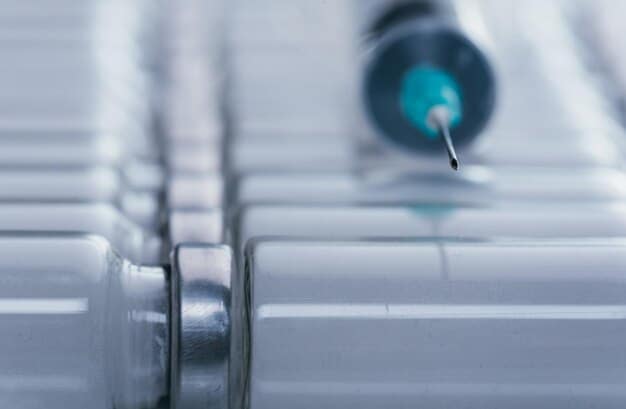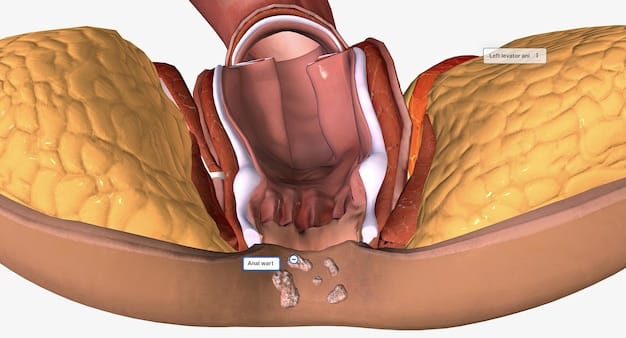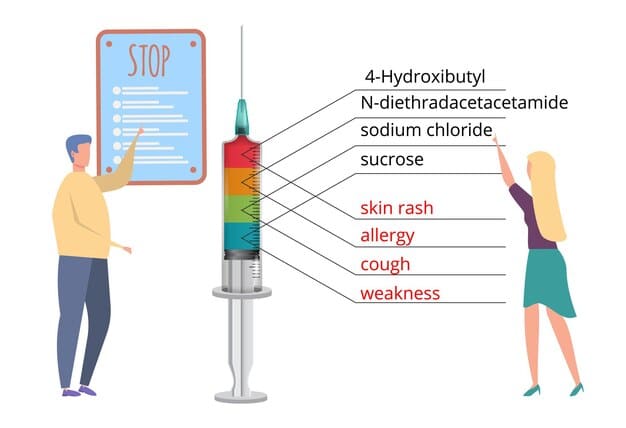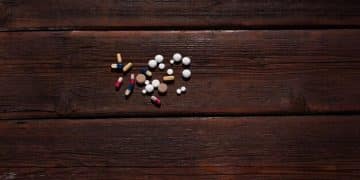Understanding the Different Types of Penile Injections for ED

Understanding the different types of penile injections for ED involves exploring options like alprostadil, papaverine, and phentolamine, each varying in effectiveness and side effects, crucial for tailored treatment.
Erectile dysfunction (ED) affects many men, and while various treatments are available, penile injections are a direct and effective option for many. Understanding the different types of penile injections for ED is crucial for making informed decisions with your healthcare provider. These injections deliver medication directly into the penis, improving blood flow and enabling an erection. Let’s delve into what these injections entail.
Understanding the Different Types of Penile Injections for ED
Penile injections represent a targeted approach to treating erectile dysfunction, offering a direct localized solution. When understanding the different types of penile injections for ED, it’s essential to appreciate how they work. Essentially, these injections introduce medication directly into the corpus cavernosum, the spongy tissue within the penis responsible for facilitating erections. This method bypasses the need for oral medications, which may be less effective for some men or contraindicated because of other health concerns.
How Penile Injections Work
The medications used in penile injections are primarily vasodilators. These substances relax the smooth muscle tissue in the penis, leading to increased blood flow. The enhanced blood flow results in an erection. The process involves injecting a small amount of medication into the side of the penis using a fine needle. With proper technique and guidance, this can be done at home, providing men with a discreet and convenient treatment option. Let’s explore the different types of medications commonly used in penile injections.
- Alprostadil: A synthetic form of prostaglandin E1 (PGE1), this medication is the most commonly used and often considered the first-line treatment for ED via injection.
- Papaverine: A vasodilator that increases blood flow. It is often used in combination with other drugs.
- Phentolamine: An alpha-adrenergic blocker that also helps to relax blood vessels, often used in combination with papaverine.

The effectiveness of penile injections can vary from person to person. Factors influencing effectiveness include the specific medication used, the dosage, and individual health conditions. While penile injections are generally safe with proper administration, it’s important to be knowledgeable about the types of injections and their potential side effects, which we will discuss in detail further in this article.
Alprostadil: The Primary Choice for Penile Injections
Alprostadil stands out as the primary choice for penile injections due to its effectiveness and safety profile. Understanding the different types of penile injections for ED often begins with a closer look at Alprostadil. This medication works by directly relaxing the smooth muscle and widening the blood vessels in the penis, which increases blood flow and causes an erection. Because of how targeted it is, Alprostadil is often recommended as the first option by healthcare providers.
Benefits of Alprostadil
Alprostadil has several benefits that make it a popular choice for penile injections. One of its biggest advantages is that it is a single-agent therapy, meaning it can be effective on its own without needing to be combined with other medications. This simplifies the treatment process and reduces the risk of interactions or additional side effects. Furthermore, Alprostadil is well-studied, with extensive clinical data backing its efficacy and safety. What are some side effects to be aware of when using Apalrostadil?
Common side effects of Alprostadil injections include:
- Mild pain at the injection site
- Minor bleeding or bruising
- The possibility of prolonged erections (priapism), which requires immediate medical attention
Despite these potential side effects, Alprostadil is generally well-tolerated, and many men find it to be a reliable and effective treatment for ED. This brings us to other options when considering understanding the different types of penile injections for ED.
Combination Therapies: Papaverine and Phentolamine
While Alprostadil alone is frequently effective, some men may benefit more from combination therapies. Options such as papaverine and phentolamine enhance vasodilation through different mechanisms, potentially increasing effectiveness or reducing side effects. Diving into understanding the different types of penile injections for ED, it’s important to be knowledgeable about these alternatives if single-agent therapies don’t suffice.
Advantages of Combination Therapies
One key advantage of using combination therapies such as papaverine and phentolamine is their synergistic effect. Papaverine works as a non-selective vasodilator, relaxing smooth muscle, while phentolamine is an alpha-adrenergic blocker, which prevents the constriction of blood vessels. When used together, they can produce a more potent vasodilatory effect than either drug could achieve alone. This can be particularly useful for men who have not responded well to Alprostadil or those who have certain underlying health conditions that make them less responsive to single-agent treatments.

Potential side effects with combination therapies can vary. Common issues include dizziness, especially with phentolamine, and a higher risk of prolonged erections (priapism) compared to Alprostadil alone. Healthcare providers need to carefully assess patients to determine if combination therapy is appropriate, considering their overall health and specific needs.
Comparing Efficacy and Side Effects
When exploring understanding the different types of penile injections for ED, comparing efficacy and side effects is vital for informed decision-making. Each type of injection boasts unique benefits and potential drawbacks. It’s important to weigh these factors with your healthcare provider to determine the best treatment plan for you. What should one consider when comparing the options?
Efficacy
Alprostadil is often considered the gold standard due to its proven efficacy and well-established safety profile. Clinical trials have shown that Alprostadil can produce erections suitable for intercourse in a significant percentage of men with ED. However, the effectiveness can vary depending on factors such as the severity of ED, underlying health conditions, and individual response to the medication. How do the combination approaches compare?
Papaverine and phentolamine combinations can be very effective for some men, especially those who do not respond well to Alprostadil. These combinations can sometimes provide a stronger and more sustainable erection. Still, they may also come with a higher risk of certain side effects.
Side Effects
Side effects are a crucial consideration when choosing a penile injection. As previously mentioned, Alprostadil can cause pain at the site of injection, minor bleeding, and, in rare cases, priapism. Combination therapies may increase the risk of priapism and can also lead to dizziness, particularly with phentolamine. It’s important to discuss all potential side effects with your doctor and report any unusual symptoms immediately.
Ultimately, the choice of which penile injection to use should be made in consultation with a healthcare professional who can consider your individual needs and medical history.
Administering Penile Injections: A Step-by-Step Guide
One aspect of understanding the different types of penile injections for ED is knowing how to administer them properly. Here’s a simplified guide for safe administration. Before starting penile injections, healthcare providers usually provide thorough training. This training covers proper injection techniques as well as hygiene and safety precautions to minimize risks.
Step-by-Step Instructions
The step-by-step process typically includes:
- Washing your hands thoroughly with soap and water.
- Preparing the injection by drawing the correct dose of medication into the syringe.
- Cleaning the injection site on the penis with an alcohol swab.
- Injecting the medication into the side of the penis, alternating injection sites to prevent scar tissue.
- Applying pressure to the injection site to prevent bleeding.
It’s essential to adhere strictly to your healthcare provider’s instructions and to follow all hygiene protocols. What are the important things to look for post injection?
After the injection, the erection should develop within 5 to 20 minutes and typically last for about an hour. If the erection lasts longer than recommended, it’s important to seek medical attention to avoid priapism. Routine follow-ups with your doctor are necessary to monitor efficacy and adjust the treatment plan as needed.
Lifestyle and Additional Treatments
Beyond understanding the different types of penile injections for ED, lifestyle changes and additional treatments can enhance their effectiveness. A synergistic approach can improve overall outcomes and quality of life. Simple changes can sometimes make a significant difference. Let’s identify some key lifestyle changes to be more aware of.
Lifestyle Changes
Key lifestyle modifications often recommended in conjunction with penile injections include:
- Regular exercise
- A balanced diet
- Smoking cessation
- Reduced alcohol consumption
These changes can improve overall health, promoting better circulation and vascular function. Furthermore, managing stress and getting enough sleep are also critical factors in improving erectile function. What other treatments are available to discuss with your doctor?
Other treatments for ED, such as oral medications, vacuum erection devices, and penile implants, can be used in combination with penile injections or as alternative options. Oral medications like PDE5 inhibitors (e.g., sildenafil, tadalafil) are often the first-line treatment. However, for men who do not respond well to these medications, penile injections can be a viable alternative. Vacuum devices are another non-invasive option that can help draw blood into the penis, creating an erection. In severe cases, penile implants may be considered as a permanent solution. Discussing all available options with your healthcare provider can help you make the most informed decision about your treatment plan.
| Key Point | Brief Description |
|---|---|
| 💉 Alprostadil | First-line injection treatment, relaxes blood vessels for better blood flow. |
| 💊 Combination Therapy | Papaverine & Phentolamine boost vasodilation when Alprostadil isn’t enough. |
| ⚠️ Administration | Proper technique & hygiene are crucial; seek training before self-injecting. |
Frequently Asked Questions
The primary types include Alprostadil (a prostaglandin), as well as combinations of Papaverine and Phentolamine. Each affects blood flow to the penis differently, offering choices based on effectiveness and side effects.
Typically, an erection develops within 5 to 20 minutes after the injection. The duration of the erection can vary depending on the medication used and individual factors, but it usually lasts for about an hour.
Choosing the right injection involves consulting with a healthcare provider. They’ll assess your medical history, current health, and specific needs to determine the most appropriate and effective treatment option for you.
Yes, potential risks include pain at the injection site, bruising, bleeding, infection, and priapism (a prolonged erection). Following proper injection techniques and discussing concerns with your doctor can minimize these risks.
Absolutely. Healthy habits like regular exercise, a balanced diet, quitting smoking, and reduced alcohol intake can significantly improve overall vascular health and enhance the effectiveness.
Conclusion
In conclusion, understanding the different types of penile injections for ED provides men with valuable knowledge. From Alprostadil to combination therapies, each option offers unique benefits and considerations. Embracing lifestyle changes and consulting healthcare professionals ensures informed decisions, enhancing treatment success and quality of life.





